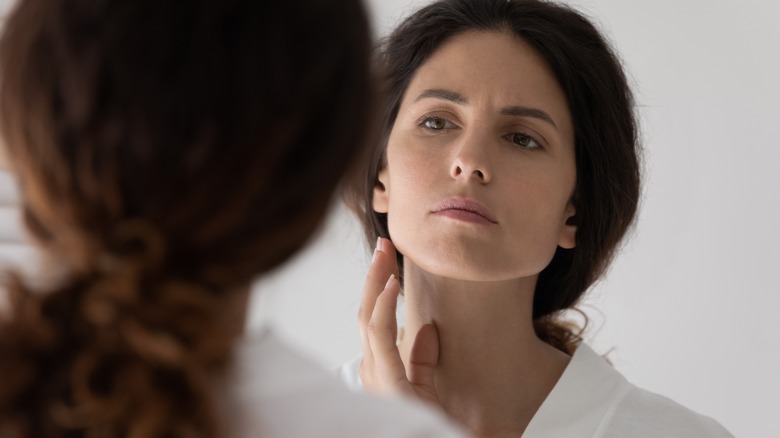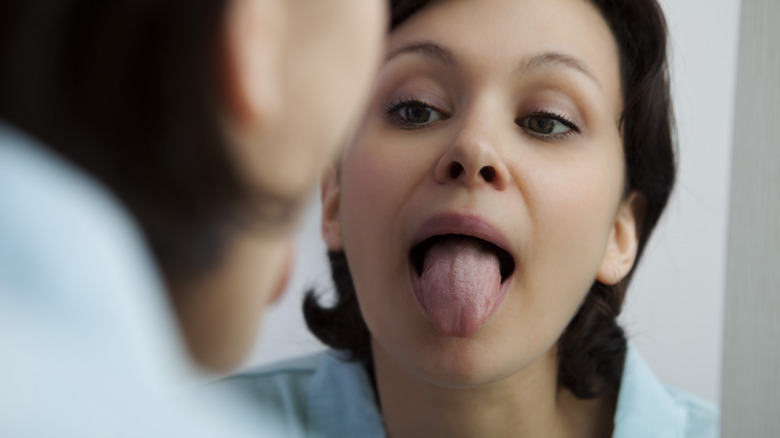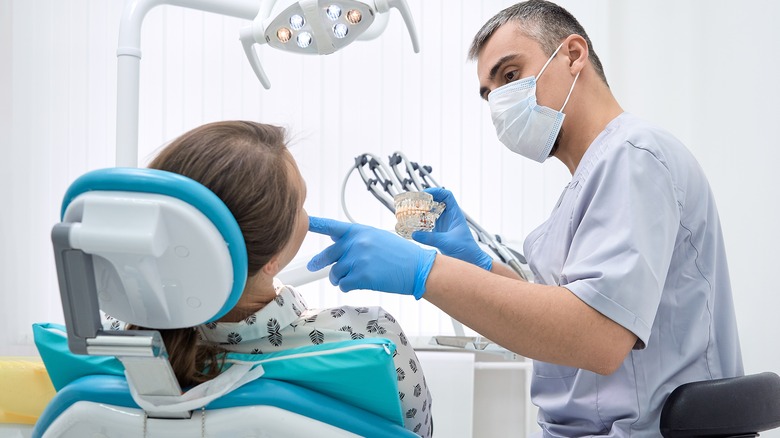What Is The Mewing TikTok Trend?
The TikTok beauty trend pipeline is at it again, this time convincing millions of viewers that they may be able to reconstruct the appearance of their jaws, teeth, or entire faces without surgery or any other expensive product. The trend is called mewing, and if you follow popular accounts like Carolinehannibal or Williamli, you've probably already seen it and wondered if it was for real. The concept of changing your lower facial development through intentional movements is known as orthotropics.
Proponents, such as Aligne Orthodontics and Orthotropics, claim that orthotropics can correct misaligned bites, straighten teeth, and change the shape of the jaw. But are orthotropics recognized as a legitimate science, and, more importantly, does mewing really work? Here is your brief guide to mewing, including how to do it, whether or not it works, if there could be any negative side effects, and where the term and practice originated.
How to mew
Mewing involves consciously training yourself to change the position of your tongue when at rest. Rather than allowing your tongue to relax at the bottom of your mouth, mewing entails moving your tongue up behind your teeth to force you to involuntarily reposition your jaw. To nail the position, start by closing your teeth together and then relaxing your mouth. While your lips and teeth are still closed, stretch your tongue up to cover the roof of your mouth (via Byte).
Your tongue should lay as flatly across the roof of your mouth and achieve as much coverage as possible. Be sure to press the tip of your tongue against the back of your teeth. Those who insist that the method works advise that you hold your tongue in this position for as much of every day as you possibly can for a period of months or years. The results promised include a permanently more defined jawline and better alignment, removing the need for corrective surgery, according to International Association of Facial Growth Guidance.
The science (or lack thereof) behind orthotropics
Orthotropics has been around since 1966 and exists on the premise that human jaws have weakened over time due to the introduction of soft cooked and processed foods. Mewing, in particular, is named after British orthodontist John Mew, who is possibly the most notable proponent of orthotropics. Mew has insisted for decades that most of the orthodontic disorders plaguing the human species are the results of evolution and not mere inherited genetics. Mew and his son, Michael, consider it their mission to "save the face" (via The New York Times Magazine).
Unfortunately, mewing and orthotropics as a whole are not considered legitimate by the rest of the orthodontic community. In fact, according to MedicalNewsToday, Mew recently had his dental license revoked as a result of the discredited claims he continues to make about orthotropics online. Not only is there no scientific proof that mewing and orthotropics work, but they also run the risk of dissuading people who actually need corrective surgery from getting it. This is one beauty trend not worth the hype.


